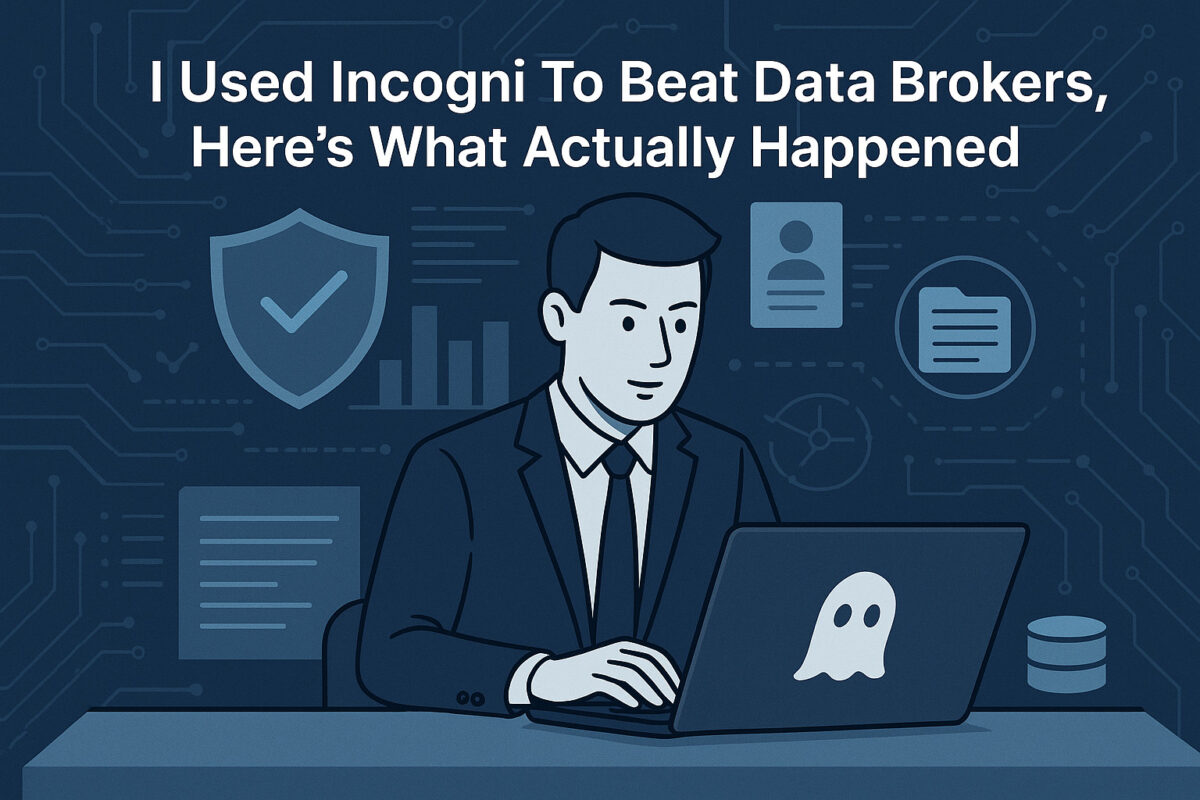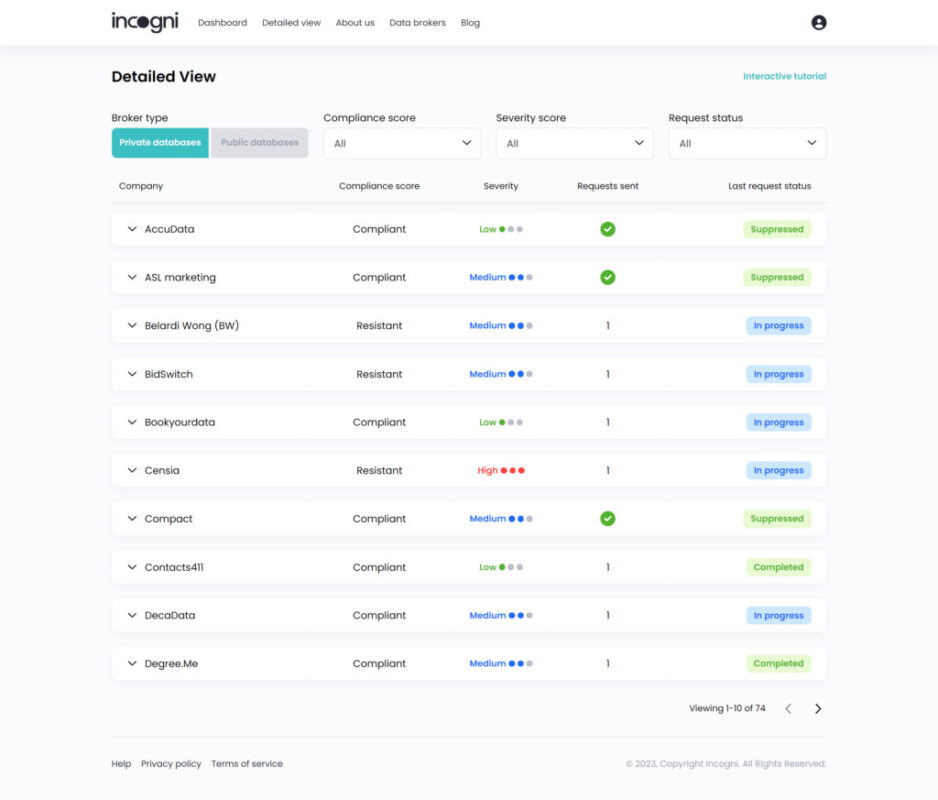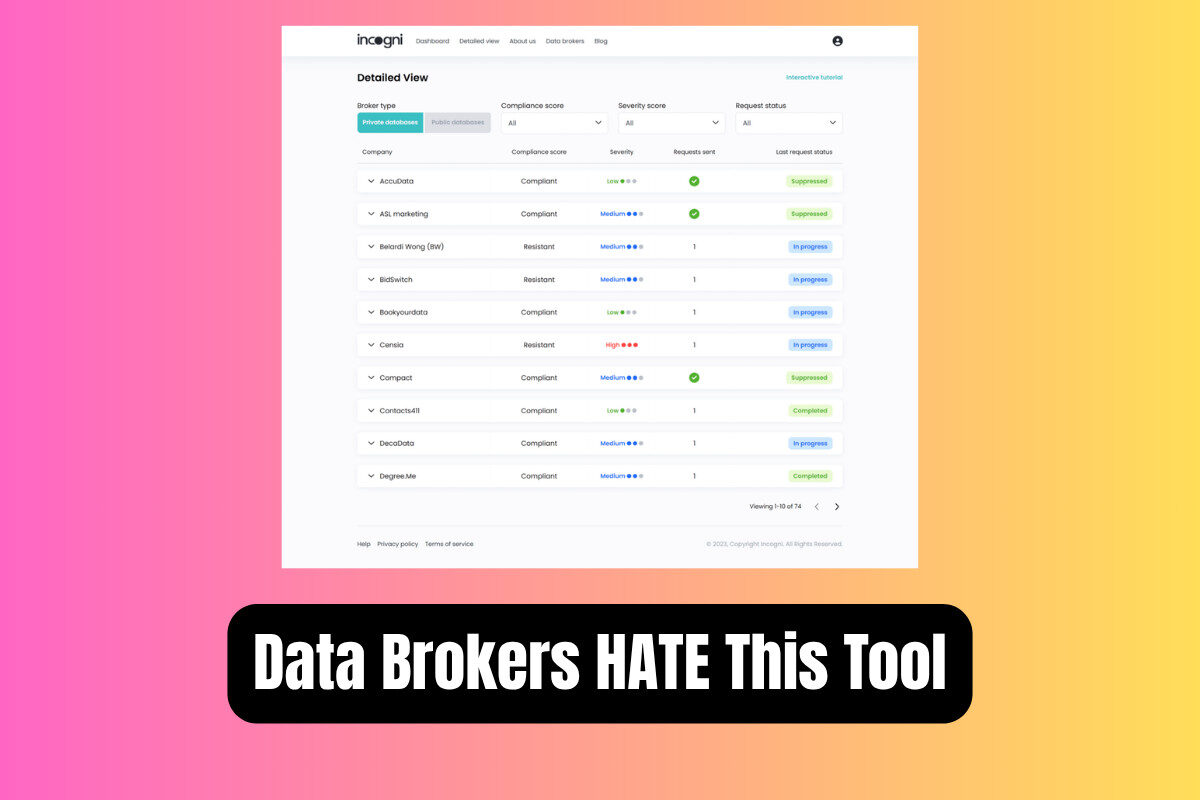Key Takeaways + The Tool I Use To Manage Everything
- Data brokers are real and they have your personal info.
- You can remove your data manually, but it takes serious time, spreadsheets, and effort.
- I use Incogni; it automates everything and runs in real-time, 24/7, targeting hidden brokers. It also keeps your data off suppression lists long-term.
- It’s one of the easiest, cheapest and most effective ways to manage your data’s exposure online.
If you’ve never heard of a data broker, that’s exactly how they like it.
These companies make a living quietly collecting, packaging, and selling your personal information—everything from your address and phone number to your job history and even family details. And you probably never gave them permission to do it.
The good news? You can fight back. Here’s a no-nonsense guide on how to remove your personal data from the web—and why using a tool like Incogni makes that process way easier (and actually effective).
What Are Data Brokers And Why Should You Care?
Data brokers are companies that collect personal information from public records, online activity, apps, and other sources.
They turn around and sell that data to advertisers, recruiters, insurers, and sometimes worse. Like shady background check services or phishing scams.
Here’s the scary part:
- Your home address, phone number, email, birthdate, job title, and even your relatives’ names are probably already listed online.
- These details can fuel identity theft, targeted scams, stalking, and doxxing.
- Data brokers operate in legal gray zones—many don’t even require your consent.
I Found My Info Online—What Can I Do About It?
I started caring about this after a friend got doxxed.
His home address and private contact info ended up online, likely thanks to data brokers or people search sites.
It wasn’t from anything sketchy: just regular public data scraped and resold.
That’s when I decided to look up myself. A few searches later, I saw:
- My full name
- Email addresses I haven’t used in years
- Old home addresses
- Employer history
- All listed publicly, with options for anyone to “unlock more info” for a small fee.
How to Remove Your Personal Data from the Web

There are two ways to remove your data from the internet:
Option 1: Do It Manually (Time-Consuming and Frustrating)
You can try to opt out of data broker sites on your own. But here’s what that really looks like:
- You’ll need to track down 100+ different broker sites.
- Each has its own opt-out process—some require ID, others make it intentionally hard.
- Many brokers relist your data later, so you’ll need to check and repeat the process constantly.
If you have the time and energy, here’s where to start:
- Visit sites like Whitepages, Spokeo, BeenVerified, and Intelius
- Search for your name and location
- Find the opt-out page (usually buried in footers or privacy sections)
- Fill out each request (some require proof of ID)
- Set a reminder to check back in 3–6 months
Pro Tip: Use a spreadsheet to track which brokers you’ve contacted and when to follow up. Some may ignore you unless you pressure them.
Option 2: Use a Data Removal Service Like Incogni (Fast and Automated)

If you value your time (or sanity), a tool like Incogni is a smarter way to go.
It’s built by Surfshark and automates the entire process of scrubbing your data from hundreds of brokers—including the ones most people don’t even know exist.
Why Incogni Works So Well:
- ✅ Automated Requests: Sends removal requests on your behalf to 100+ data brokers
- 🔁 Ongoing Protection: Keeps your data off suppression lists so it doesn’t come back
- 🌍 Covers Public + Private Databases: Includes people search engines and international brokers
- 📜 Uses Privacy Laws: Leverages GDPR, CCPA, and more to force legal compliance
- 🕵️♂️ Finds Hidden Brokers: Targets obscure and niche sites you’d never discover on your own
- 📊 Progress Tracking: Get regular updates on who had your data and who removed it
After signing up and providing some basic info (name, address, email, phone), Incogni scanned its broker database and sent removal requests automatically. I didn’t need to write a single email or fill out a single opt-out form.
Within a week, I could see the first removals completed. And the list keeps growing—Incogni scans for new brokers over time and follows up as needed.
💡 Did You Know? Incogni also helps reduce your risk of being doxxed or stalked by removing sensitive info like phone numbers and addresses from public sites.
Manual vs. Automated Removal: A Quick Comparison
| Feature | Manual Removal | Incogni |
|---|---|---|
| Time Required | High (10+ hours) | Low (10-minute setup) |
| Follow-Up Needed | Yes | No – handled automatically |
| Coverage | Limited to brokers you find | 100+ brokers, public + private |
| Data Reappearance | Likely | Suppression list reduces relisting |
| Legal Enforcement | Must DIY | Uses GDPR, CCPA, and more |
| Progress Tracking | Manual spreadsheets | Built-in dashboard & reports |
Who Should Use Incogni?
If any of this sounds familiar, Incogni is made for you:
- You’re worried about identity theft, scams, or doxxing
- You work in healthcare, education, law, or media (Incogni offers discounts for these groups!)
- You value your privacy and don’t want your personal info on the open web
- You don’t have time to contact dozens of data brokers by hand
Final Thoughts: Don’t Wait Until It’s Too Late
Most people don’t think about their online footprint until something goes wrong. But once your data is out there, anyone can find it and use it however they want.
Removing your personal info from the web doesn’t just protect your privacy; it protects your safety, your identity, and your peace of mind.
Whether you go the manual route or let Incogni do the heavy lifting, the most important thing is to start now. In the age of AI, scraping data has never been easier and that means hacks, scams and fraud are getting harder and harder to spot.



